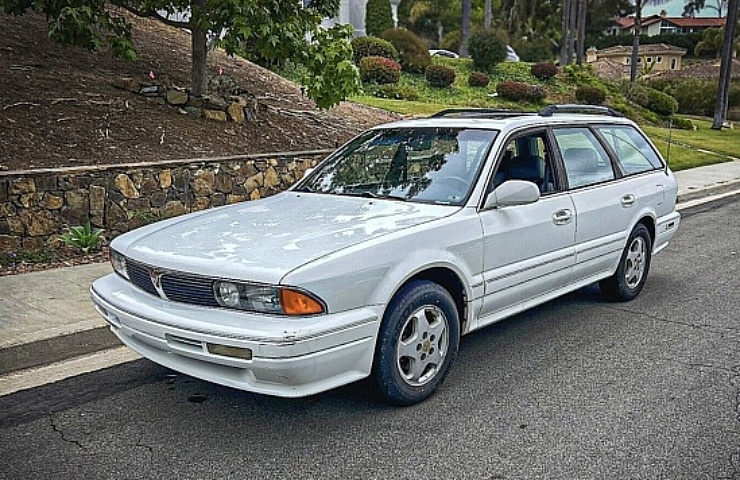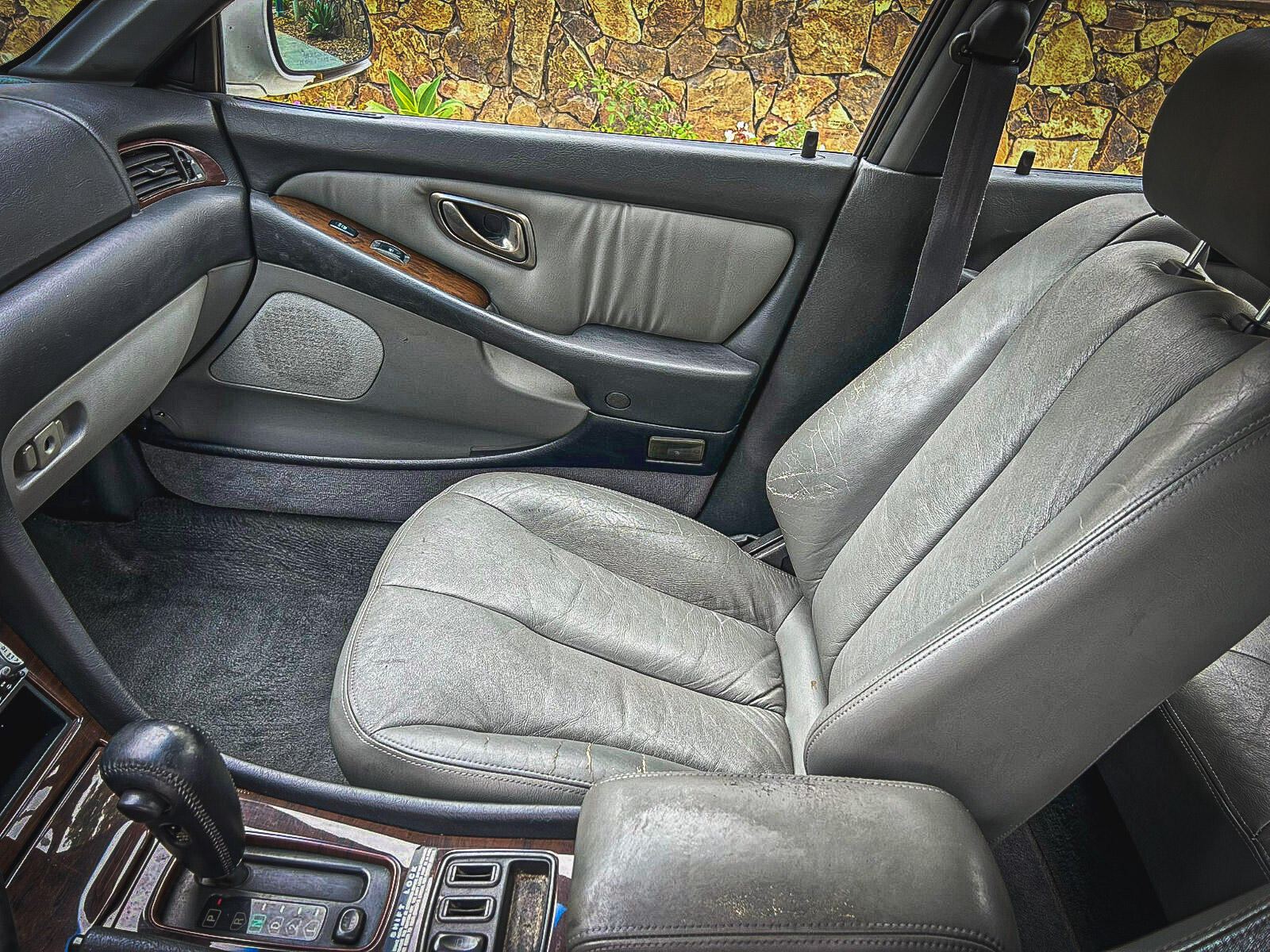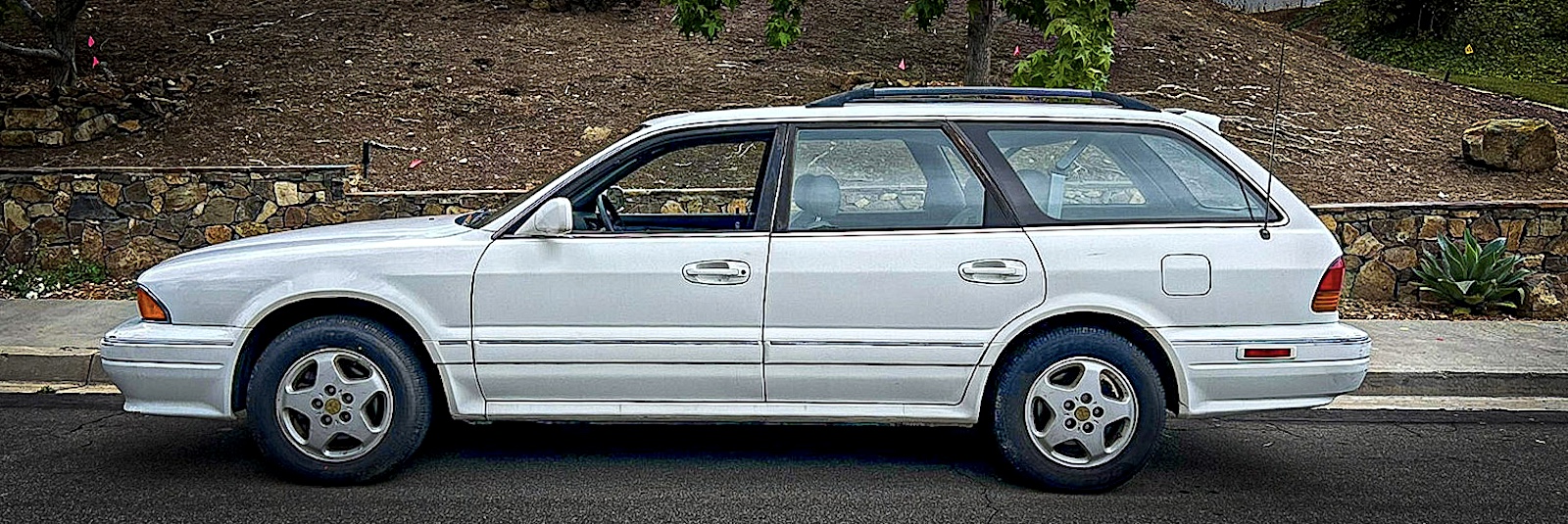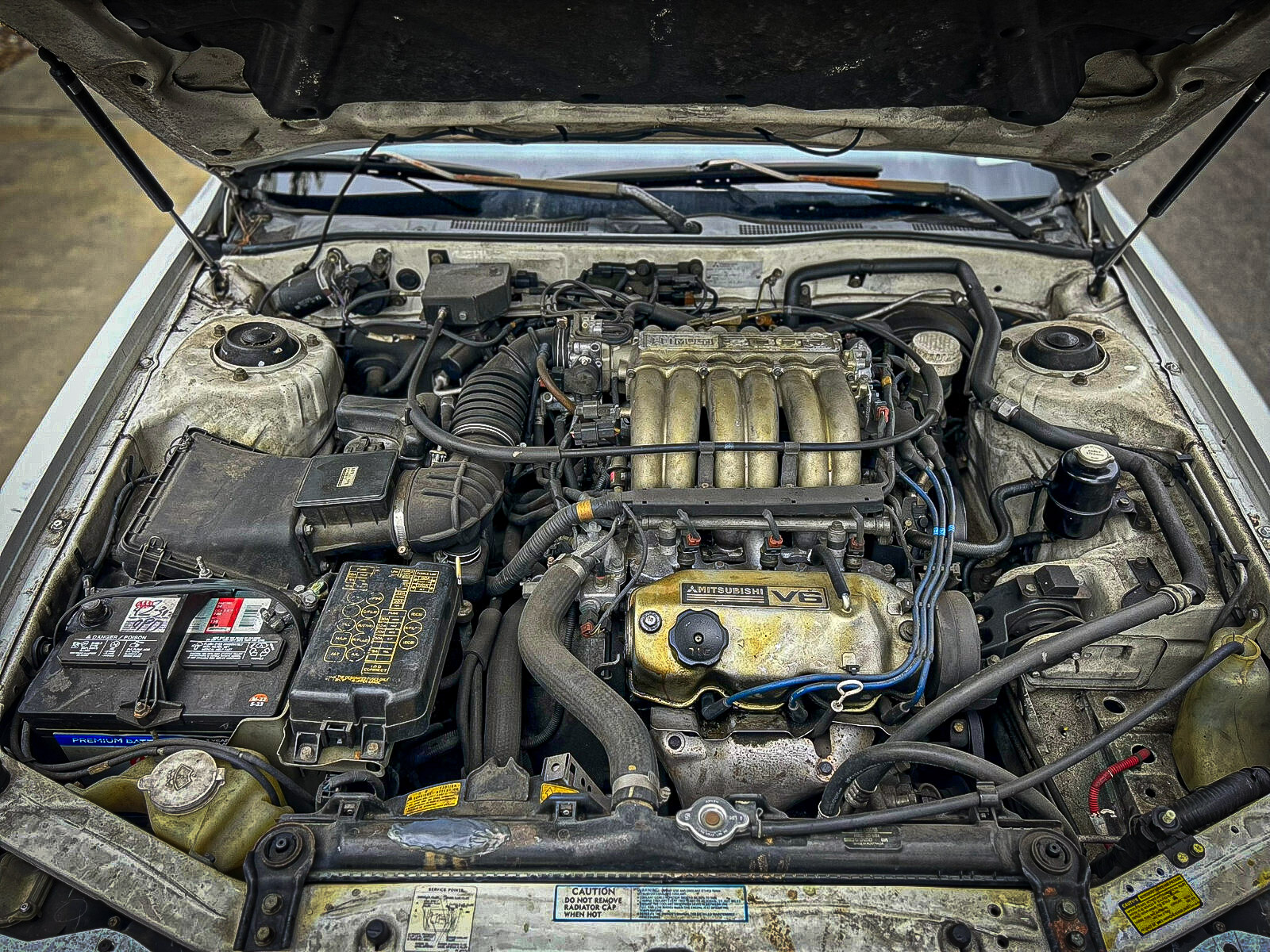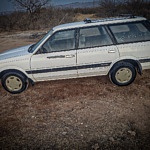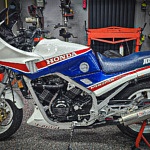New Japanese Luxury
Japanese carmakers began building luxury sedans in earnest in the 1980s. Honda introduced its game-changing Acura Legend. Toyota and Nissan geared up their Lexus and Infiniti luxury divisions, respectively. Mitsubishi lacked the resources to establish a separate brand. However, that didn’t stop the company from introducing the Diamante, a high-tech, premium sedan.
The name originated from the Spanish word for “diamond.” It symbolizes fortune and beauty, and also honors Mitsubishi’s over-100-year-old logo: three red diamond shapes that date back to the Samurai era.
Mitsubishi positioned the Diamante as an executive sedan. It shared a platform with the 3000GT sports car and had a menacing look, thanks to its sporty, reverse-slant “shark” nose.
High-Tech Features
Launched in 1990, the Japanese market Diamantes featured a slew of high-tech innovations, including four-wheel steering and the world’s first radar cruise control. Presets for seat, steering wheel, and mirror positions could be linked to a specific key fob for the convenience of multiple drivers in the household. An early GPS used a CRT screen, which could double as a television.
The Diamante won the prestigious Japan Car of the Year award upon its debut.
Most of Diamante’s cutting-edge features failed to make it across the Pacific. Mitsubishi product planners didn’t believe Americans would pay luxury car prices for such tech on a Mitsubishi-badged car.
That didn’t mean they skimped. They still gave Americans one of the first traction control systems on the market—a trace control feature that slows cornering when it detects wheelspin. It also featured an electronically controlled suspension to maintain body level while turning, as well as all-wheel drive with a viscous-coupling differential.
Shop now for OEM Diamante partsAustralian-Built Wagons
The extra equipment brought the Diamante to a heavy 3,668 pounds fully loaded. It was available with either a 175-horsepower 12-valve V-6 or a 202-horsepower 24-valve V-6. While Mitsubishi offered a five-speed manual in Japan, US versions were automatic only.
In 1993, Mitsubishi added a wagon body style to the Diamante line. Only the 175-horsepower engine was available in US-market wagons. The sedans were made in Japan, and the Diamante wagons were built in Australia. It’s one of the rare cars sold in America that came from Down Under.
Due to the rising popularity of SUVs and the declining market for wagons, the Diamante wagon was discontinued at the end of the 1995 model year. The sedan was discontinued in 2004.
Shop now for Mitsubishi Diamante partsNo-Brainer
The Diamante Wagon listed on eBay isn’t a museum-quality specimen. There are noticeable scratches on the bumpers and a medium-sized dent in the right rear door. The driver’s seat leather is torn, as well.
However, the paint is surprisingly glossy, and the rest of the cabin is very clean for a 30-year-old family hauler. With 180,000 miles and an asking price of just $3,950, it was a no-brainer for wagon fans.
The Diamante was stylish, powerful, and innovative. With a luxury badge, buyers would have paid more for its high-tech features. Then, it would likely be remembered fondly alongside its rivals—and not forgotten in the wilds of automotive history.
Shop now for wagons
